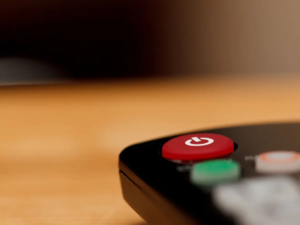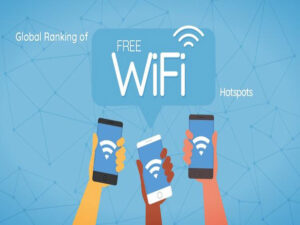Your phone is never without you. It is your most faithful companion, day and night. And yet it stresses you out because you’re afraid of missing out. Does that sound familiar to you? Then you should reconsider your cell phone use. The question: Is everything still okay or are you already addicted to your cell phone?

TABLE OF CONTENTS
1-Identify cell phone addiction
2-Smartphones as everyday companions
Average cell phone usage
What triggers the attraction?
Happiness through accessibility: Appearances are deceptive
3-When are you considered addicted to a cell phone?
4-Symptoms and consequences of cell phone addiction
5-Mobile phone addiction self-test
6-Cell phone addiction in children: What to do – what helps
7-Cell phone addiction in adults
Don’t be afraid of professional therapy
8-thA little help: getting rid of your cell phone in everyday life
What was dismissed with a smile a few years ago is now a serious issue: cell phone addiction. If the mobile phone is left at home, it feels quite uncomfortable for many; you even feel naked. Only when you consciously go without the Internet for a while do you realize how much the device has taken possession of you. Do you get nervous, does your heart race and do you feel a subliminal panic? But does that mean you are already addicted and need to think about therapy?
IDENTIFY CELL PHONE ADDICTION
No – not everyone is immediately addicted to cell phones just because they look at their smartphones a lot. However, an (incipient) dependency can be determined based on certain risk factors and symptoms. In fact, it becomes dangerous when everything revolves around the cell phone and hobbies or social contacts are impaired. Even if it is difficult to do without a smartphone with internet access and the many apps for a short period of time and the withdrawal or removal of the smartphone leads to stress, anger, annoyance and frustration, there could be an increased potential for addiction. You should also be worried if even colleagues, parents or friends notice your behavior.
Even if cell phone addiction is still not considered a disease due to a lack of studies, there is still a technical term for it. Scientists have already found a term for this phenomenon with “nomophobia”: nomophobia is derived from “no mobile phone phobia” and means something like “no mobile phone fear”. By the way: The WHO has recognized online gaming addiction as a disease since 2019.
SMARTPHONES AS EVERYDAY COMPANIONS
In 2015, 46 million people in Germany still had a smartphone, according to the statistics portal Statista , in 2019 there were around 58 million Germans. Ascending trend. The study finds that smartphones have become an integral part of everyday life, especially among 18 to 49-year-olds. But just owning a cell phone doesn’t make you a regular user. There are huge differences between the age groups in particular. The sticking point: social media.
Young people in particular use Instagram, Tiktok , Snapchat, WhatsApp and Co. in continuous mode. This is also confirmed by a study by the DAK and the German Center for Addiction Issues at the University Hospital Hamburg Eppendorf (UKE) from 2018. According to this, the excessive use of social media platforms by all 12 to 17 year olds is so excessive that the study 2.6 percent of those surveyed classified as addicted to mobile phones. In absolute numbers, that is 100,000 young people.
Average cell phone usage
What does the life of an average mobile phone user look like? As early as 2014, researchers at the University of Bonn evaluated the behavior of hundreds of thousands of users with the help of the self-developed app “Menthal”. The findings are clear: an average smartphone owner checks their cell phone at least once an hour, but on average every twelve minutes.
In 53 percent of the cases, people not only look, but also unlock the smartphone, according to the researchers. Most often, Facebook , WhatsApp and other messengers are opened. Communicating digitally with friends and colleagues will get the attention everyone is striving for. The device is in your hand three hours a day. In addition to the chats, time is passed with games, YouTube, news and blogs – but always in the digital realm.
What triggers the attraction?
With every sound and every vibration of the smartphone, you want to see what’s new, which app is reporting this time. It could be important. But why is it tempting to keep checking for new notifications? The phenomenon is comparable to staying in Las Vegas. It shines and flashes everywhere. Neon signs, lights and billboards promise big money, unforgettable experiences and a good time. The signal color red immediately draws people’s attention.
It is no coincidence that small red numbers appear above the respective apps and folders on the main screen as a sign of new notifications. The windows that pop up suggest: “Someone is thinking of you” or “You are popular”. The cell phone menu is just as colorful as Las Vegas. It’s a miracle that the brain defies this constant sensory overload of strong visual and acoustic impressions.
Happiness through accessibility: Appearances are deceptive
It has now been scientifically proven that the body releases the happiness hormones dopamine and endorphins every time you press a button or swipe to activate the display. The quick accessibility and positive feedback, for example in the social networks, ensure that the mobile phone is used again and again. The body gets maximum reward with minimum effort. Without being aware of it, we expect a good feeling when we pick up the smartphone. A vicious circle that can lead to cell phone addiction.
WHEN ARE YOU CONSIDERED ADDICTED TO A CELL PHONE?
When is cell phone use abnormal? When does the smartphone become an addiction? Although mobile phones were designed as digital support and relief for everyday life, they are gradually beginning to fascinate some of their users so much that they hardly feel able to live without them – a mobile phone addiction develops.
As a guideline for cell phone addiction, one can see a cell phone or smartphone use of more than 60 times a day. People affected by cell phone addiction quickly get stressed, feel anger, annoyance or even frustration if they have to do without their smartphone for a short time. The symptoms of cell phone addiction are similar to those of alcohol and drug addiction. The effects on the physical and mental health of those affected are similarly devastating and should not be underestimated.
SYMPTOMS AND CONSEQUENCES OF CELL PHONE ADDICTION
Has the smartphone become a “close friend and companion”? Does it always have to be close at hand? Whether you’re eating, working, shopping, watching TV or sleeping, is your cell phone always on your side? The last look in the evening belongs to the device and the first one the next morning too?
Dependence creeps up on you – as with all addictive substances. Cell phone addicts often have no idea that regular internet use has long since become a compulsion. You often only notice how much you have been taken by the smartphone if you consciously stop using it. Even short periods of time without a cell phone, such as a longer meeting or sudden radio silence on a train journey, can lead to real withdrawal symptoms such as strong nervousness, anger or frustration.
If this causes anxiety or even depression, a dependency on the cell phone is likely. If everything revolves around the mobile phone and you also interrupt pleasant activities, such as a hobby or a conversation with friends and family, to look at the display, you probably have an addiction problem.
MOBILE PHONE ADDICTION SELF-TEST
When you think of addiction, the first images that spring to mind are “classic” drugs, such as alcohol and nicotine. Depending on cell phones you mean isn’t there? In any case, these signs should be taken seriously and discussed with a person you trust or a doctor:
Feelings of anxiety, even depressive moods or anger arise when the smartphone cannot be found or the battery is empty.
If the mobile phone is left at home, sweating is the result.
- The person concerned feels uncomfortable and has a bad conscience because of their excessive cell phone use.
- Children and adults suffer from concentration and sleep disorders, forgetfulness, learning and performance disorders as well as fatigue. There are also physical complaints due to unhealthy posture and lack of exercise.
- The person affected can no longer imagine life without a mobile phone.
- If the mobile phone has to be turned off, for example at school or on a plane, the result is severe nervousness.
- Bad network reception is followed by inner unrest.
- Children have problems at school.
- Even while eating or in conversations, the person concerned constantly looks at the display of the cell phone so as not to miss a call or message.
- Although those affected communicate constantly, excessive consumption leads to neglect of important daily tasks or the immediate social environment. Those affected withdraw more and more from social life, they become lonely and neglect family, hobbies and work.
CELL PHONE ADDICTION IN CHILDREN: WHAT TO DO – WHAT HELPS
The conclusion of the BLIKK study from 2017 shows that excessive media consumption endangers the health of children and young people. The consequences are feeding and falling asleep disorders in babies as well as language development disorders and motor hyperactivity in children up to the age of six. Concentration disorders in elementary school age are also part of the symptom picture.
However, the danger for children and young people of becoming addicted to mobile phones can be averted at an early stage. Setting daily limits and breaks promotes conscious use of smartphones. Instead of generally banning chatting and surfing, parents should also show their offspring and offer alternatives – for example in the form of excursions and activities.
If the attraction of the smartphone world is too irresistible for children and young people and their thoughts revolve almost exclusively around the device, parents can first introduce their children to targeted “mobile phone fasting”. In severe cases, one should not shy away from going to a therapist. About eight percent of young people are considered “at risk of addiction”, but only a minority of them are considered to be in need of therapy.
CELL PHONE ADDICTION IN ADULTS
Not only in children and young people, but also in adults, cell phone addiction or internet addiction does not have to occur in the first place. Almost everyone knows the feeling in the evening of not having accomplished anything during the day. The feeling arises when individual work processes are interrupted and you are torn out of your tasks. This makes you dissatisfied and stressful. A large part of this stress is self-made, for example when you regularly look at the cell phone display to retrieve new information.
The big question is: am I affected? In the case of an alcohol or cigarette addiction, this is clear. The amount can be read on empty bottles or packs. But what about a potential cell phone addiction that takes place online and digitally? Most people don’t know exactly how often and how long they use their mobile phones. After a short search on the Internet or in the App Store, app suggestions are spit out that provide information about user behavior. The apps also help limit usage.
Don’t be afraid of professional therapy
In addition to the possibility of self-therapy, psychology now offers numerous treatments for nomophobia. Technically, a distinction is made between certain types. Cell phone addiction develops depending on which type you belong to. As with all addictions, the same applies to cell phone addiction: do not be afraid of therapy. Admission is usually the biggest hurdle.
A LITTLE HELP: GETTING RID OF YOUR CELL PHONE IN EVERYDAY LIFE
Overcoming an imminent cell phone addiction can be very difficult for some sufferers. If it were easy, you probably wouldn’t look at the display every 20 minutes. With a few tips, it can be possible to keep the flaring desire in check. In this article you can read what these look like and how you can sometimes even be helped digitally


